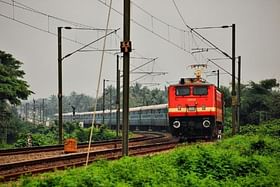Indian Railways has set a target of becoming a ‘net-zero carbon emitter’ by 2030, said Union Railways Minister Ashwini Vaishnaw in a written reply to the Lok Sabha on Wednesday (15 March).
The Railways has taken a number of initiatives to reduce its carbon emissions, the Minister said.
These include — use of energy efficient technologies like completely switching over to production of three phase electric locomotives with regenerative features, use of head on generation (HOG) technology, use of LED lights in buildings and coaches, star rated appliances and afforestation.
Further, the key strategies that have been identified for achieving the net-zero carbon emission target are, procurement of power through renewable energy sources; shifting from diesel to electric traction; and promotion of energy efficiency.
The projected energy demand of Indian Railways in 2029-30 is expected to be about 8,200 mega-watt (MW), the Lok Sabha was told.
In order to achieve net-zero carbon emission, the expected requirement of renewable capacity by 2029-30 would be about 30,000 MW.
As of February 2023, about 147 MW of solar plants (both on rooftops and on land) and about 103 MW of wind power plants have been commissioned.
Further, about 2,150 MW of renewable capacity has also been tied up.
In addition, Indian Railways has planned to progressively procure renewable energy from different power procurement modes for its future energy requirements.


